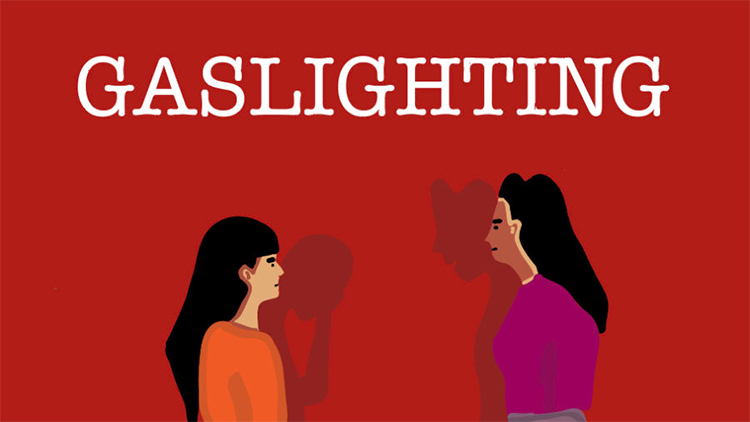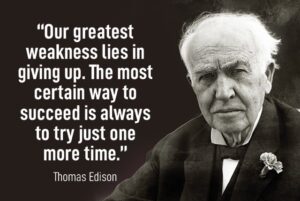What Is Gaslighting: Gaslighting is a sneaky form of emotional abuse that involves manipulating reality to make the victim question their sanity and memories. It can happen in various types of relationships, including with family members, romantic partners, bosses, or even doctors. If you suspect that you are being gaslit, it is crucial to take action and seek help.Trusting your instincts is essential when it comes to recognizing gaslighting behavior. Finding support from trusted friends or family members who can validate your experiences is an important first step towards healing. Setting clear boundaries with the abuser and avoiding arguments can also help you avoid getting caught up in the cycle of emotional abuse.
It’s vital to understand that the effects of emotional abuse can be long-lasting and impact one’s mental health, self-esteem, and relationships significantly. Therefore, seeking professional therapy or counseling can provide a safe space for processing the trauma of gaslighting and developing healthy coping mechanisms.Remember that seeking help is a sign of strength rather than weakness. Everyone deserves respect and safety in all their relationships. If you are experiencing any form of emotional abuse or manipulative behavior, it is essential to seek help immediately to protect yourself and your well-being.
Outlines Of Guide
ToggleWhat Is Gaslighting?
Gaslighting is a type of psychological manipulation that relies on inducing self-doubt. According to Paige Sweet, Ph.D., an assistant professor of sociology at the University of Michigan who researches gaslighting in relationships and the workplace, gaslighting can be likened to attempting to label someone as ‘crazy.’ It involves portraying someone as unstable, irrational, and lacking credibility, causing them to question the reality of their experiences and feel like no one will believe them.
Gaslighting is a form of psychological manipulation that involves a power imbalance between the abuser and the victim. The abuser often takes advantage of stereotypes or vulnerabilities related to gender, sexuality, race, nationality, or class as a means of exerting control over their victim. This can make it difficult for the victim to recognize the abuse and can lead to long-term emotional and psychological harm. It is important to be aware of the signs of gaslighting and seek help if you suspect that you or someone you know may be experiencing this type of abuse.
Andrew D. Spear, an associate professor of philosophy at Grand Valley State University, describes gaslighting as a form of psychological manipulation that goes beyond just controlling the victim or getting them to do what the gaslighter wants. The most crucial aspect of gaslighting is that the gaslighter desires the victim to agree with their distorted perception of reality. In a 2019 paper on gaslighting published in Inquiry, Spear explains how this insidious technique can severely damage a person’s mental health and well-being. Additionally, he emphasizes the importance of recognizing and addressing this behavior in relationships, workplaces, and society as a whole.
Why Is It Called Gaslighting?
The term “gaslighting” comes from a play called “Gas Light,” which was written in 1938 and later adapted into several movies. The plot of each work revolves around a male protagonist who convinces his wife that she is imagining things that are actually happening, leading her to question her sanity. Today, gaslighting is recognized as a form of emotional abuse and manipulation in relationships, where one partner attempts to make the other question their own reality. It is essential to be able to recognize the signs of gaslighting and seek help if you suspect that you or someone you know is experiencing it. Some common signs include feeling confused, doubting your memory, second-guessing yourself, or feeling like you’re going crazy. It’s important to remember that gaslighting is never acceptable behavior in any relationship and seeking support from a trusted friend or professional can help break free from its effects.
How Do You Know if Someone is Gaslighting You?
Sweet explains that gaslighting is inherently confusing, making it difficult to recognize, especially when it originates from a trusted individual.
Things to keep an eye out for include:
- The “Twilight Zone” effect. Victims of gaslighting often report feeling like a situation is surreal—like it’s happening on a different plane from the rest of their life.
- Language describing you or your behavior as crazy, irrational or overemotional. “When I asked women about their partners’ abusive tactics, they often described being called a ‘crazy bitch,’” Sweet writes in “The Sociology of Gaslighting” in American Sociological Review. “This phrase came up so frequently, I began to think of it as the literal discourse of gaslighting.”
- Being told you’re exaggerating.
- Feeling confused and powerless after leaving an interaction.
- Isolation. Many gaslighters make efforts to isolate victims from friends, family and other support networks.
- Tone policing. A gaslighter may criticize your tone of voice if you challenge them on something. This is a tactic used to flip the script and make you feel that you’re the one to blame, rather than your abuser.
- A cycle of warm-cold behavior. To throw a victim off balance, a gaslighter may alternate between verbal abuse and praise, often even in the same conversation.
The National Domestic Violence Hotline provides a list of five techniques that a gaslighter may use against a victim:
- Withholding. The abusive partner pretends not to understand or refuses to listen.
- Countering. The abusive partner questions the victim’s memory of events, even when the victim remembers them accurately.
- Blocking/Diverting. The abusive partner changes the subject and/or questions the victim’s thoughts.
- Trivializing. The abusive partner makes the victim’s needs or feelings seem unimportant.
- Forgetting/Denial. The abusive partner pretends to have forgotten what actually occurred or denies things like promises made to the victim.
How Does Gaslighting Impact Mental Health?
Gaslighting is meant to provoke uncertainty and self-doubt, which is often harmful to a victim’s mental health. If you’re being gaslit, you may experience:
- Anxiety
- Depression
- Disorientation
- Lowered self-esteem
- Post-traumatic stress disorder
- A hyperbolized fear of danger, known as hypervigilance
- Suicidal thoughts
If you are experiencing gaslighting and facing any of the symptoms mentioned, it’s important to seek assistance from a mental health counselor or other therapists. They can provide support in dealing with the trauma during and after specific incidents.
Examples of Gaslighting
Outlined below are instances of gaslighting that have been recorded by researchers who have conducted thorough investigations into the phenomenon and conducted extensive interviews with victims. It is important to keep in mind that gaslighting is a widespread issue, and the examples provided are merely a small selection. If you recognize any of the indicators mentioned above, it is possible that you are still being subjected to gaslighting, even if none of the scenarios below precisely match your own circumstances.
In an article on gaslighting in Politics, Groups and Identities, Angelique M. Davis and Rose Ernst write about a typical scenario where a cheating partner denies their significant other’s concerns about inappropriate or dishonest conduct.
- Sweet’s study, which concentrated on heterosexual relationships, includes numerous instances of common gaslighting.
- Ebony’s significant other would take her money and then blame her for being ‘careless’ with finances and losing it herself.
- Adriana’s boyfriend concealed her phone and then falsely informed her that she had misplaced it, with the intention of disorienting her and obstructing her communication with others.
- Jenn characterized her former boyfriend as a ‘chameleon’ who fabricated minor tales to disorient her, such as falsely claiming the color of the shirt he wore the previous day.
- Emily recounted how her ex-husband took her keys to prevent her from leaving the house, and then claimed that she had lost them “again.”
Gaslighting in Romantic Relationships
Gaslighting is possible in all romantic relationships, with the gaslighter typically holding a position of power. However, studies show that gaslighting occurs most commonly in heterosexual relationships, where a man gaslights a woman.
Gaslighting is frequently associated with domestic violence. According to a survey by the National Domestic Violence Hotline, 74% of adult female victims of domestic violence stated that they had experienced gaslighting from their partner or ex-partner.
Male perpetrators usually use gender stereotypes to manipulate their female partners through gaslighting. This manipulation is rooted in the belief that women are inherently irrational, while masculinity is associated with reason and femininity with excessive emotion and irrationality. Despite progress in modern-day U.S. society, these stereotypes persist, especially in intimate relationships, as highlighted in Sweet’s research.
Gaslighting often targets a woman’s appearance and sexuality. Sweet interviewed 43 women in Chicago who had experienced domestic violence and gaslighting, and heard stories like:
Margaret’s spouse persuaded her that she was drawing too much notice by dressing up, styling her hair, and wearing makeup. She started to accept his tales of men ogling at her, which led her to wear sweatshirts and overeat. In her own words, she ceased “taking care” of herself to satisfy his doubts.
Carla’s husband attempted to persuade her that she was having affairs with men in the vicinity by pointing out men on the street and urging her to recognize those who were waiting for her. He accused her of being a ‘prostitute’ for using an IUD (intrauterine device) as a form of birth control and compelled her to have it taken out. His manipulative sexual tactics restricted Carla’s freedom of movement, leading her to isolate herself at home out of fear of the false narratives he might create.
Gaslighting and Gender
Gender-based gaslighting can occur in various contexts beyond intimate relationships. Some other examples of this phenomenon include:
Gaslighting in medicine. Doctors sometimes gaslight women by using gender stereotypes to dismiss valid symptoms and health concerns, convincing the female patient that there is nothing wrong with her. Public or collective gaslighting.Public gaslighting, also known as collective gaslighting, affects numerous women, as widely shared statements on social media by public figures or ordinary individuals can cause women as a group to doubt themselves.
Cynthia A. Stark, Ph.D., discusses an incident in her paper “Gaslighting, Misogyny and Psychological Oppression” where two high school football players raped an unconscious 16-year-old at a party and were later portrayed sympathetically by a CNN reporter despite their actions.
The term “public gaslighting” refers to a situation where women are made to doubt their own perception of an event, leading them to question whether they were treated unjustly. This type of gaslighting can occur when society dismisses or downplays the harmful actions of men towards women, making it difficult for women to fully embrace their own perceptions and seek justice for themselves. As a result, women may struggle with feelings of disquiet and uncertainty, wondering if they are overreacting or if the man’s actions were truly harmful. It is essential for society to acknowledge and address this issue in order to create a more just and equitable environment for all individuals.
Gaslighting of transgender people.A gaslighter might attempt to persuade a transgender individual that they are suffering from a mental health disorder. In a less overt form of gaslighting, a parent could suggest to their transgender daughter that she should opt for pants as they are more comfortable for playtime, leading the child to question her preference for skirts or dresses. Often, gaslighting behavior comes from parents of transgender children who state they are supportive of their child, which makes the gaslighting more difficult to identify.
Gaslighting in the legal system. Police officers, judges or juries may become unknowing participants in gender-based gaslighting. “The legal system becomes a critical site of gaslighting when abusers gain control of the narrative and ‘flip’ stories and events, drawing on stereotypes about women as irrational, and especially about black women as aggressive,” Sweet writes. “In this way, institutional authorities sometimes become unknowing colluders in gaslighting tactics, setting women up for further violence and loss of credibility.” This is often illustrated in child custody cases and sexual assault cases.
Are you looking for relationship counseling?
Couples therapy is an effective way to address relationship challenges and improve overall happiness. Seeking help from Talkspace can provide you with the support you need to overcome obstacles and strengthen your relationship. Whether you’re dealing with communication issues, trust concerns, or other challenges, working with a qualified therapist can help you navigate these obstacles and achieve greater fulfillment in your partnership. Don’t hesitate to seek help if you’re struggling – everyone deserves to be happy in their relationships.
Gaslighting and Race
Davis and Ernst, in their paper “Racial Gaslighting,” describe racial gaslighting as the process that perpetuates and normalizes a white supremacist reality by pathologizing those who resist. This phenomenon has a longstanding presence in the U.S. and continues to exist today.
The U.S. government used euphemistic language during the WWII forced removal of Japanese-American citizens from their homes, which is an example of racial gaslighting. In a 1944 Supreme Court decision, the term “concentration camps” was avoided and the camps were referred to as “assembly and relocation centers,” casting doubt on the severity of the situation.
In more recent times, the All Lives Matter movement has been cited as a form of racial gaslighting. According to Davis and Ernst, the movement conceals the prioritization of white lives and overlooks the centuries of mistreatment and dehumanization of Black individuals.
Racial gaslighting commonly occurs in predominantly white workplaces, especially affecting women of color who work as scientists, as their negative experiences are often doubted or denied by their colleagues, according to researchers Michelle A. Rodrigues, Ruby Mendenhall, and Kathryn B. H. Clancy.
The researchers have found that this form of gaslighting is evident in diversity initiatives that seem insincere and fail to tackle genuine issues. Such initiatives, which prioritize the desire of white colleagues to portray a positive image of inclusion, end up gaslighting marginalized students and faculty by constantly assuring them of a welcoming and inclusive environment while dismissing their actual experiences.
Gaslighting in the Workplace
While gaslighting in the workplace can often be related to racial dynamics, it’s important to note that it can also occur outside of that context. If someone in a position of power regularly undermines your confidence or causes you to question your abilities, you may be experiencing gaslighting. This behavior can have a detrimental impact on your career and personal well-being, leading to feelings of self-doubt and insecurity. It’s important to recognize when this type of behavior is occurring and take steps to address it, such as speaking with a trusted colleague or seeking support from a mental health professional.
If you speak up about any form of misconduct in the workplace, you might encounter what’s known as whistle-blower gaslighting. This involves creating a situation where the whistle-blower begins to question their own perceptions, competence, and mental state, as explained by registered nurse Kathy Ahern, Ph.D., in a paper in The Journal of Perinatal & Neonatal Nursing. This occurs when a superior, whom you trusted to address the issue, attempts to dismiss it and then declares that the whistle-blower is irrationally overreacting to typical daily interactions, according to Ahern. Sweet says that employees who report sexual harassment are frequently gaslighted, with both the perpetrators and management denying the occurrence, leading the victim to doubt their own recollection and perception of the events.
Gaslighting in Politics
Gaslighting is a manipulative tactic that can even affect political polls. It’s not uncommon for politicians or political entities to use gaslighting to skew public discourse and sway support for or against a particular perspective. This can lead to misleading poll results and an inaccurate representation of public opinion. In today’s highly polarized political landscape, it’s more important than ever to be aware of the potential impact of gaslighting on our democracy and critical thinking. By staying informed and questioning information sources, we can combat gaslighting and ensure that our voices are heard accurately in political polls and elections.
According to Farah Latif, a communications expert from George Washington University, the strategy described in the book series involves deceitful and manipulative tactics. It aims to destabilize and confuse public opinion on political issues. This strategy is often used by those seeking power or influence through misinformation and sowing discord. It can be especially effective in polarized or distrustful societies, exploiting existing divisions for political gain. Therefore, it is crucial to be well-informed and critical of consumed information to avoid falling prey to such tactics.
Latif explains that when gaslighting becomes partisan, politicians can utilize messaging power to fabricate false narratives. They might also seek to undermine constituents’ perception of reality for backing an opposing idea or challenging the perpetrator’s narrative.
How to Deal With Gaslighting
Tell as many people as possible what’s happening. Sweet advises not to confide in just one person about your experience, but to share it with multiple people in your social network to gain support and validation for your reality. Rodrigues, Mendenhall, and Clancy state in their study that when friends and colleagues validate your experiences of mistreatment, you are more capable of realizing that the abuse is not a result of personal shortcomings.
Stay in touch with friends and family. Gaslighting is a form of emotional abuse that can leave victims feeling confused, isolated, and unsure of themselves. To combat gaslighting, maintain open communication with loved ones. Isolation makes individuals vulnerable to self-doubt, which gaslighters exploit for control. Be vigilant for signs of gaslighting behavior, trust your instincts, and set clear boundaries. If you suspect gaslighting, seek support from a therapist or counselor. Remember, it’s not your fault and help is available.
Keep a journal. My CWA, a nonprofit supporting families affected by domestic abuse, recommends using a journal to regain control if gaslighting has undermined your self-esteem and left you feeling bewildered. This can help you validate your own experiences and affirm that they occurred as you remember, despite your abuser’s attempts to convince you otherwise.
Contact the National Domestic Violence Hotline or National Sexual Assault Hotline. Sweet explains that sexual assault advocates have extensive experience in addressing various forms of psychological manipulation. To seek help, individuals can contact the National Domestic Violence Hotline at 800-799-SAFE and the National Sexual Assault Hotline at 800-656-4673, both of which provide round-the-clock assistance and online chat options.
Rybelsus vs. Ozempic For Weight Loss
Normal Blood Sugar Levels By Age Chart
Normal Resting Heart Rate By Age Chart
Frequently Asked Questions
How do you know when someone is gaslighting you?
Recognizing gaslighting requires practice and awareness. If you sense something is amiss, particularly if your partner or someone else consistently exhibits typical gaslighting behaviors, it might be necessary to communicate with them, reassess the relationship, or seek professional assistance.
What are gaslighting behaviors?
The American Psychological Association states that gaslighting involves manipulating someone into questioning their own perceptions, experiences, or understanding of events.
Why do people gaslight?
Gaslighting occurs for various reasons, and each case is unique. One common objective is to create confusion and make the victim doubt their own reality. Certain mental health disorders such as narcissistic personality disorder and antisocial personality disorder can also contribute to this behavior.
What does unconscious gaslighting mean?
Gaslighting can occur unintentionally, as experts point out that emotional abuse can be caused without a deliberate intention to harm or exploit.










































